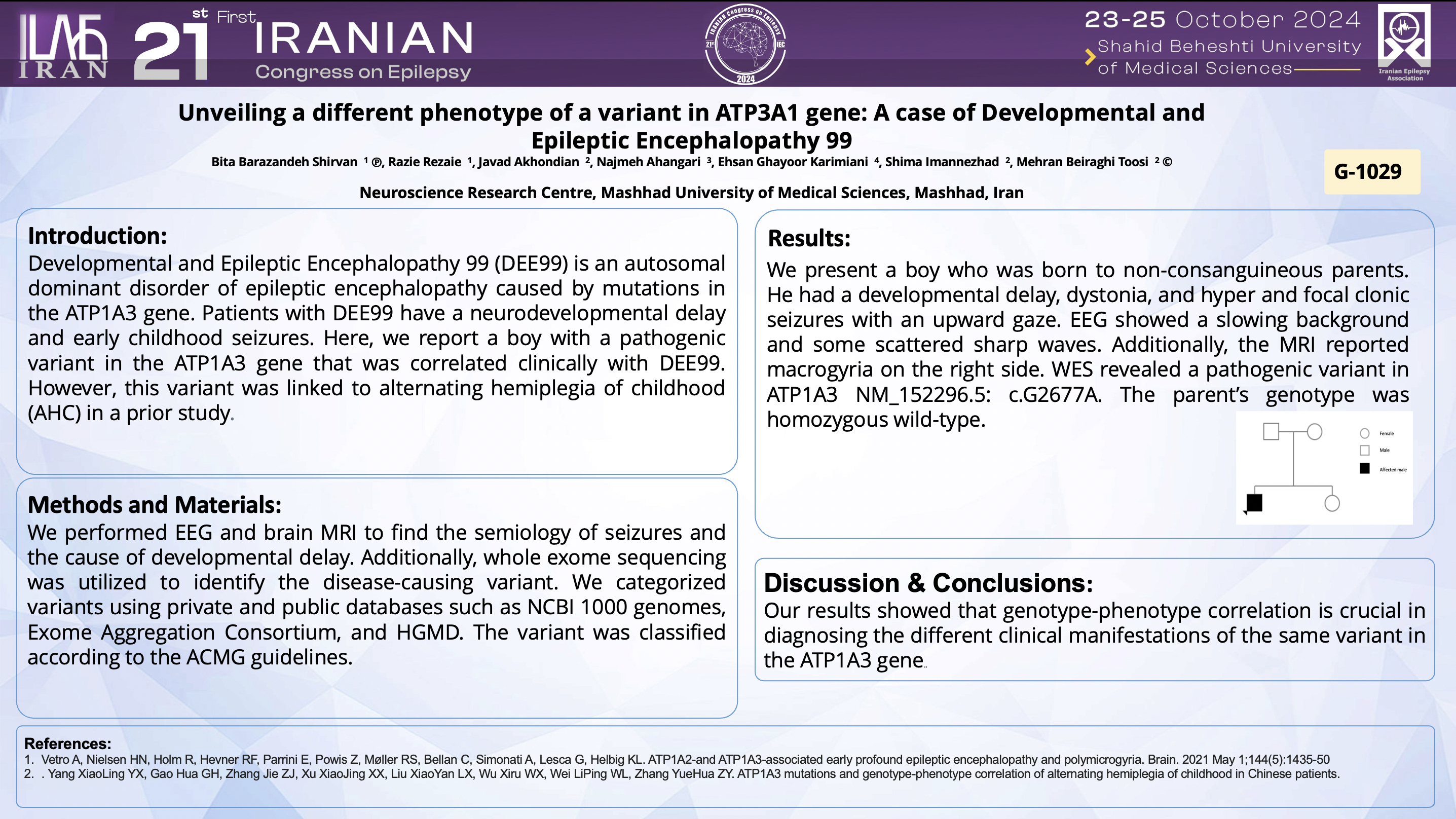Unveiling a different phenotype of a variant in ATP3A1 gene: A case of Developmental and Epileptic Encephalopathy 99
کد: G-1029
نویسندگان: Bita Barazandeh Shirvan ℗, Razie Rezaie , Javad Akhondian , Najmeh Ahangari , Ehsan Ghayoor Karimiani , Shima Imannezhad , Mehran Beiraghi Toosi ©
زمان بندی: زمان بندی نشده!
دانلود: دانلود پوستر
خلاصه مقاله:
background
Developmental and Epileptic Encephalopathy 99 (DEE99) is an autosomal dominant disorder of epileptic encephalopathy caused by mutations in the ATP1A3 gene. Patients with DEE99 have a neurodevelopmental delay and early childhood seizures. Here, we report a boy with a pathogenic variant in the ATP1A3 gene that was correlated clinically with DEE99. Although, this variant was linked to alternating hemiplegia of childhood (AHC) in a prior study.
Methods
We performed EEG and brain MRI to find the semiology of seizures and the cause of developmental delay. Additionally, whole exome sequencing was utilized to identify the disease-causing variant. We categorized variants using private and public databases such as NCBI 1000 genomes, Exome Aggregation Consortium, and HGMD. The variant was classified according to the ACMG guidelines.
Findings
We present a boy who was born to non-consanguineous parents. He had a developmental delay, dystonia, and hyper and focal clonic seizures with an upward gaze. EEG showed a slowing background and some scattered sharp waves. Additionally, the MRI reported macrogyria on the right side. WES revealed a pathogenic variant in ATP1A3 NM_152296.5: c.G2677A. The parent’s genotype was homozygous wild-type.
Conclusion
Our results showed that genotype-phenotype correlation plays a crucial role in the diagnosis of the different clinical manifestations of the same variant in the ATP1A3 gene.
Key words
DEE99, ATP1A3, WES
